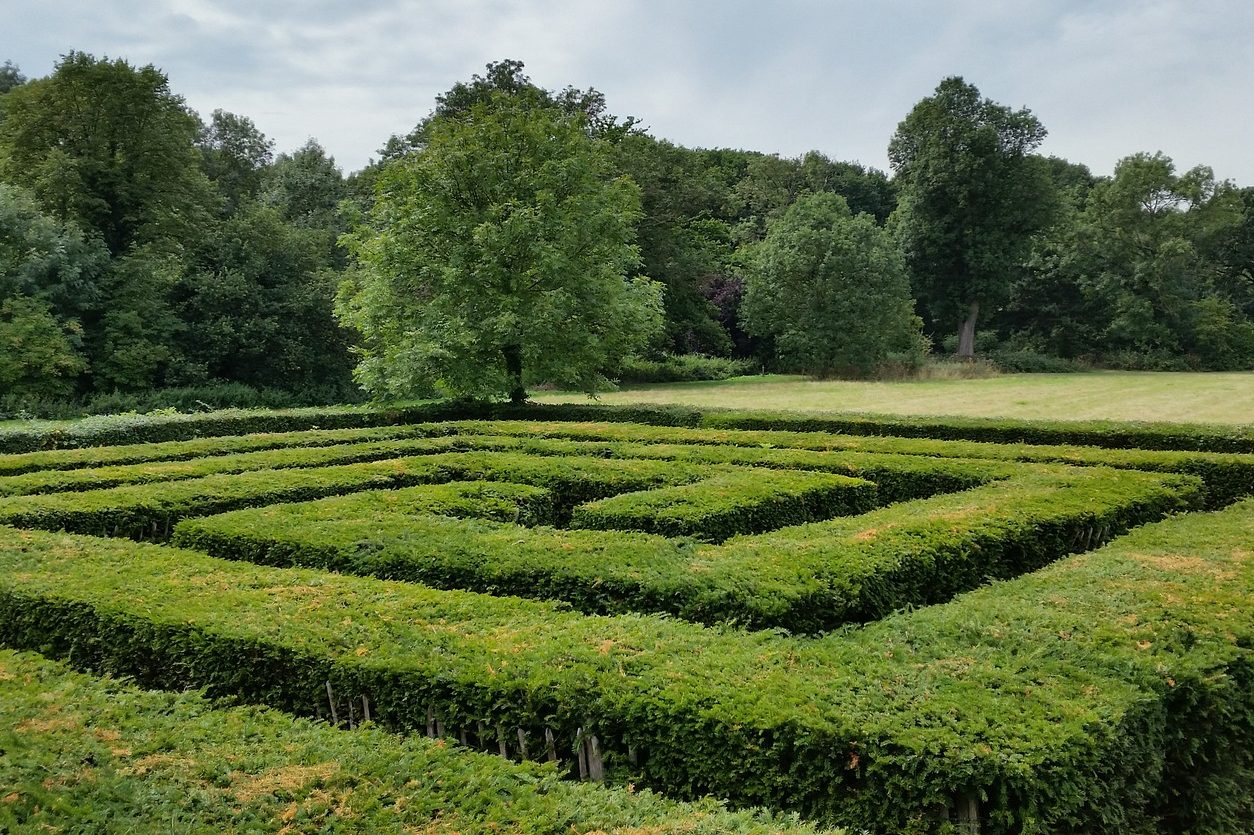Garden topiary can transform your outdoor space from plain to beautifully-inspiring – making your garden the envy of your neighbours. From hedge art to artistic pot plants, we take a look at how to do topiary at home.
What is topiary?
Often found in formal gardens or stately gardens, as well as domestic gardens, topiary is a horticultural art form whereby perennial plants and shrubs are trained into defined shapes by clipping. These closely-clipped evergreens have been used as impressive works of art for many years, from early Roman gardens through to contemporary English gardens.
What types of topiary are there?
There are many different variations of topiary garden features. These include:

Mazes and labyrinths
Many private and public gardens still have these stylish features, which were first introduced by the Normans in pleasure gardens.
Parterres
These are large, ornamental clipped flower bed arrangements on a flat level, flanked by box hedges. Historically found in lavish Italian renaissance gardens, parterres today feature in all sizes of gardens, courtyards and walled gardens.
Trained ivy
The art of training trailing plants like ivy to grow around wire frames is ideal for those with smaller outdoor spaces. All sorts of shapes can be created using the wire frames, such as animal figures and flowers.

Traditional topiary
Traditional topiary such as ball or box hedges, pyramids and spirals adds architectural depth to any style of garden. Box shrubs are one of the most popular plants used for topiary art, along with conifers, which can be clipped and pruned into sculptural forms.
4 expert tips on DIY topiary
1. Choose the right plants
The first thing you need to do when doing your own topiary is to pick the plants to shape. Dense evergreen plants are by far the best option as they are sturdy enough to endure shearing, they grow easily and slowly, and they maintain their colour throughout the seasons. Boxwood and yew are most commonly used for topiary, but privet, holly and Lonicera nitida are other options.
2. Invest in quality tools
Combined with patience and an intricate eye, specialist topiary tools are essential to make your garden look as stunning as the professionals can make it. Different types of pruning shears for trimming branches, pruning smaller branches and pruning central branches are required. You’ll need snips, secateurs and small-blade pruning shears, as well as hedge shears for pruning larger areas. Frames are useful if you want elaborate designs, and of course, heavy-duty gloves are needed to protect your hands.
Good to know: Sharpen and oil your tools regularly to keep them in their best working order.
3. Practice your shapes
Beginners can start with formal topiary shapes like globes, spirals, cubes or pyramids. These geometric shapes are used in formal topiary and are perfect for starting out before then trying your hand at larger, more elaborate shapes using wire frames – such as animals, characters and pretty much anything you want.
4. Look after your works of art
After you’ve spent hours sculpting your clipped masterpieces you don’t want to let the plants die or begin to look unkempt, so it’s important to undertake regular topiary maintenance. This will involve watering the plants, using good soil to plant them in, applying fertilisers, treating any signs of pests, and trimming/pruning once or twice a year. Topiary frames or wires can help with pruning for keeping your plants in tip-top condition and looking fantastic throughout the year. If you have topiary in a pot, you should add an organic fertiliser at least once a year in order to replenish nutrients and minerals in the soil. Remove any damaged branches, or those showing signs of disease, immediately, to prevent spreading.
Feeling inspired?
There are many fascinating topiary gardens in Britain that are open to the public that can further inspire you to do some DIY topiary.
One of the finest topiary examples in the world is Levens Hall in Cumbria, which still maintains its original design from 1694. More than 100 topiaries stand tall in this beautiful garden with striking designs and shapes, including four peacocks and Queen Elizabeth and her Maids of Honour, rubbing shoulders with manicured geometric shapes Meantime, Athelhampton House and Gardens is world-famous for its bold topiary pyramids set amongst pretty flowers.
If you need a helping hand in getting your topiary established, Evergreen is experienced in creating clipped masterpieces for homeowners and commercial clients. Whether you want to improve your curb appeal with eye-catching shaped hedges or spiral pot topiary, or regular maintenance of your formal garden topiary, we can take care of the hard work so you can enjoy the aesthetics of your outdoor space. Call us on 01606 624560.
